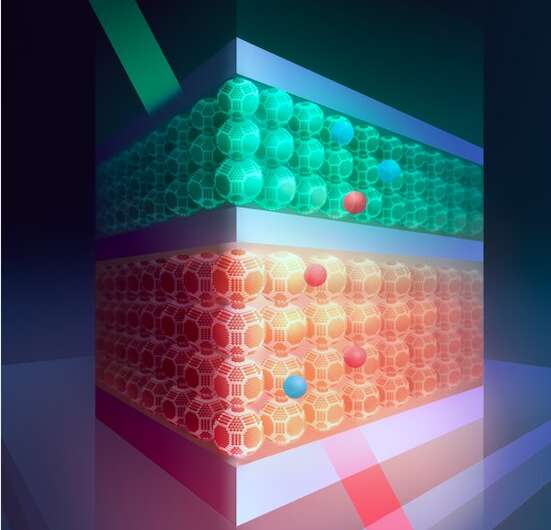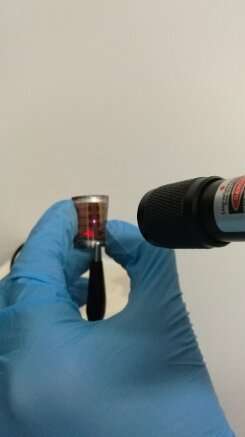April 20, 2020 feature
Highly efficient solution-processed upconversion photodetectors based on quantum dots

Researchers at ShanghaiTech University, the University of Toronto and the Chinese Academy of Sciences have recently developed new solution-processed upconversion photodetectors, which are a class of devices that can detect or respond to light. These devices, presented in a paper published in Nature Electronics, were fabricated using quantum dots (QDs), which are tiny semiconducting particles that follow the laws of quantum mechanics and thus have several unique properties.
"Upconversion photodetectors are promising tools for infrared detection and imaging, as they do not require complicated integrated circuit systems," Zhijun Ning, one of the researchers who carried out the study, told TechXplore. "However, most upconversion devices developed so far have low conversion efficiencies and they are all fabricated through expensive, high-vacuum deposition on rigid substrates. Our objective was to design and fabricate a highly efficient upconversion photodetector by a simple solution process, which is compatible with flexible device structures."
The new device developed by Ning and his colleagues has two key components: an infrared photodetector and a visible light emitting diode (LED). The photodetector absorbs infrared light and generates a photocurrent, which can be used to power the LED light. Through this process, the researchers were able to convert the infrared light into a visible light signal.
"A unique characteristic of our device is that we introduced Ag nanoparticles into the electron transporting layers, which enable electron tunneling under illumination, generating high gain and high efficiency," Ning explained. "Compared to previously reported upconversion devices, this device shows the highest efficiency at low voltage among all upconversion devices with the same device structure."

In contrast with upconversion photodetectors developed in the past, the device proposed by Ning and his colleagues was fabricated using quantum dots, both in its infrared absorption and emission layers. Its infrared absorption layer contains colloidal lead sulfide quantum dots, while its light emission layer contains cadmium selenide/zinc selenide quantum dots.
This unique combination enables a higher photon-to-photon conversion efficiency and a low turn-on voltage, compared to other existing photodetectors. In addition, the new upconversion photodetector presents a remarkably low dark current, a high detectivity and short response time.
"Our upconversion device showed a high photon-to-photon efficiency of 6.5% and the lowest turn-on voltage reported yet (2.5 V), which is a breakthrough for this simple device structure," Ning said.
In their study, the researchers demonstrated the potential of their upconversion device for in vitro infrared imaging and bio-imaging of human tissue, to detect cancerous areas. In the future, however, their device could have a variety of other applications, for instance in the development of new wearable technology that can monitor the health of human users over time.
"In our next studies, we plan to improve the conversion efficiency and stability of our device further, especially for flexible devices," Ning said. "On the other hand, we will collaborate with other teams working on the development of diagnostic tools and technologies, to broaden our device's applications for bio-imaging and bio-sensing."
More information: Wenjia Zhou et al. Solution-processed upconversion photodetectors based on quantum dots, Nature Electronics (2020). DOI: 10.1038/s41928-020-0388-x
© 2020 Science X Network





















